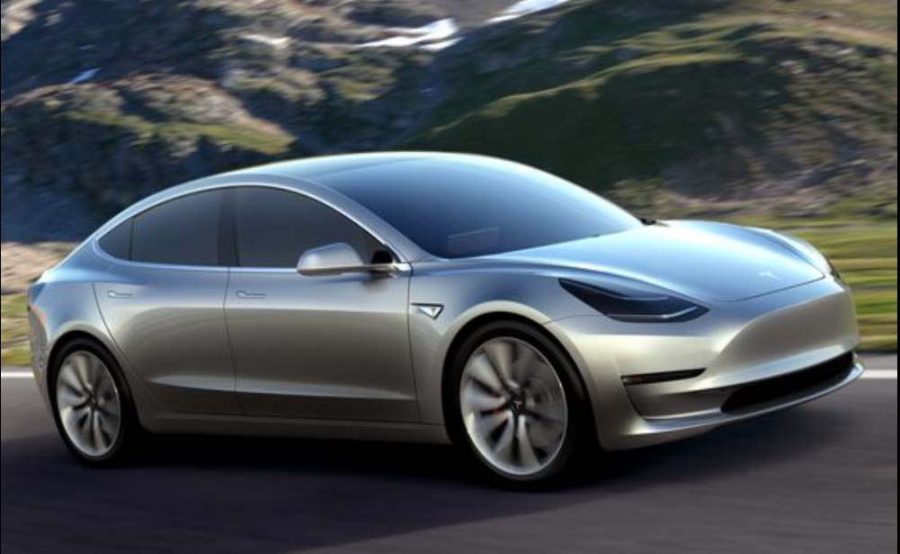The future of the road
Cruising through the country, the Model 3 prototype appears like another win for Tesla. The company has dominated the electric car industry since 2008.
November 2, 2016
Not many people have electric cars or understand their benefits. According to the Union of Concerned Scientists, less than 1% of U.S. households currently have an electric vehicle. Many people believe that the price of the car, itself and the cost of electricity, would not outweigh the benefit of never having to purchase gas again. Many believe that maintenance would be too expensive. Charging stations are not commonplace in cities, and that electric engines are not as fast nor can travel as far before a fill up than a normal petrol engine. These people are right about some of the non-fuel burning vehicles, but not all of them. Many do not have as high driving ranges, but the companies that focus on electric engines do not falter there. Many major companies are changing the game with electric supercars, luxury vehicles, and now with typical family cars.
Tesla has been the frontrunner of quality electric vehicles beginning with the Roadster in 2008. The first highway legal all-electric car to use lithium ion battery cells accelerated from 0-60 in 3.7 seconds and held 245 miles per charge. The Roadster almost matched in price with BMW’s popular M5 sports sedan, but had a 0.5 second faster 0-60. It is an extremely fast car, and with a Ferrari-like exterior look in a two door convertible, the Roadster displayed much promise for the future of the fully-electric car industry.
Later on, Tesla followed up the Roadster with their Model X and the popular Model S. The Model S hit the market as a luxury sedan for the wealthy, usually costing around $100,000 after adding the common features and premium battery. With a 2.5 second 0-60, adjustable suspension, stunning 4-door interior designing, and a beautiful but not flashy exterior, Tesla exceeded all expectations set by the Roadster. This is a luxury electric car you can drift around a parking lot one hour and casually take your kid to school the next. Holding between 219 to 302 miles per charge, depending on the battery purchased, the vehicle is very reliable, too. The Model X introduced a luxury SUV by Tesla that is faster than the coupe Roadster and can seat 7, costing around $120,000. These prices are very high and skew the general population away from such cars. So, in March 2016, Tesla unveiled the Model 3: a $35,000 fully-electric car for the common man. Though it will not officially be distributed until the end of 2017, over 400,000 pre orders have been placed. The company strives to continually exceed expectations so that everyone may drive a well made electric car.
Many other popular companies are making their attempts at the electric car. Chevrolet has sold its hybrid Volt since 2010, which can drive up to 53 miles per charge in fully electric mode. Mercedes sells a fully electric version of their supercar, called the SLS AMG Electric Drive. With 751 horsepower and holding only 155 miles per charge, it is extremely fast but not a practical electric vehicle by any means. Senior Jackson Wilkins said, “I drive a truck, but I really like how quickly electric cars gain speed. They are really fast off the line.” Though a small population of drivers choose electric, it is the future of motor vehicles. With many new government restrictions on fuel emissions worldwide, powerful V8 and V12 engines will not be as common. Electric car companies have already impressed high-end car owners. Now, it is their chance to provide the general public with reliable vehicles.












